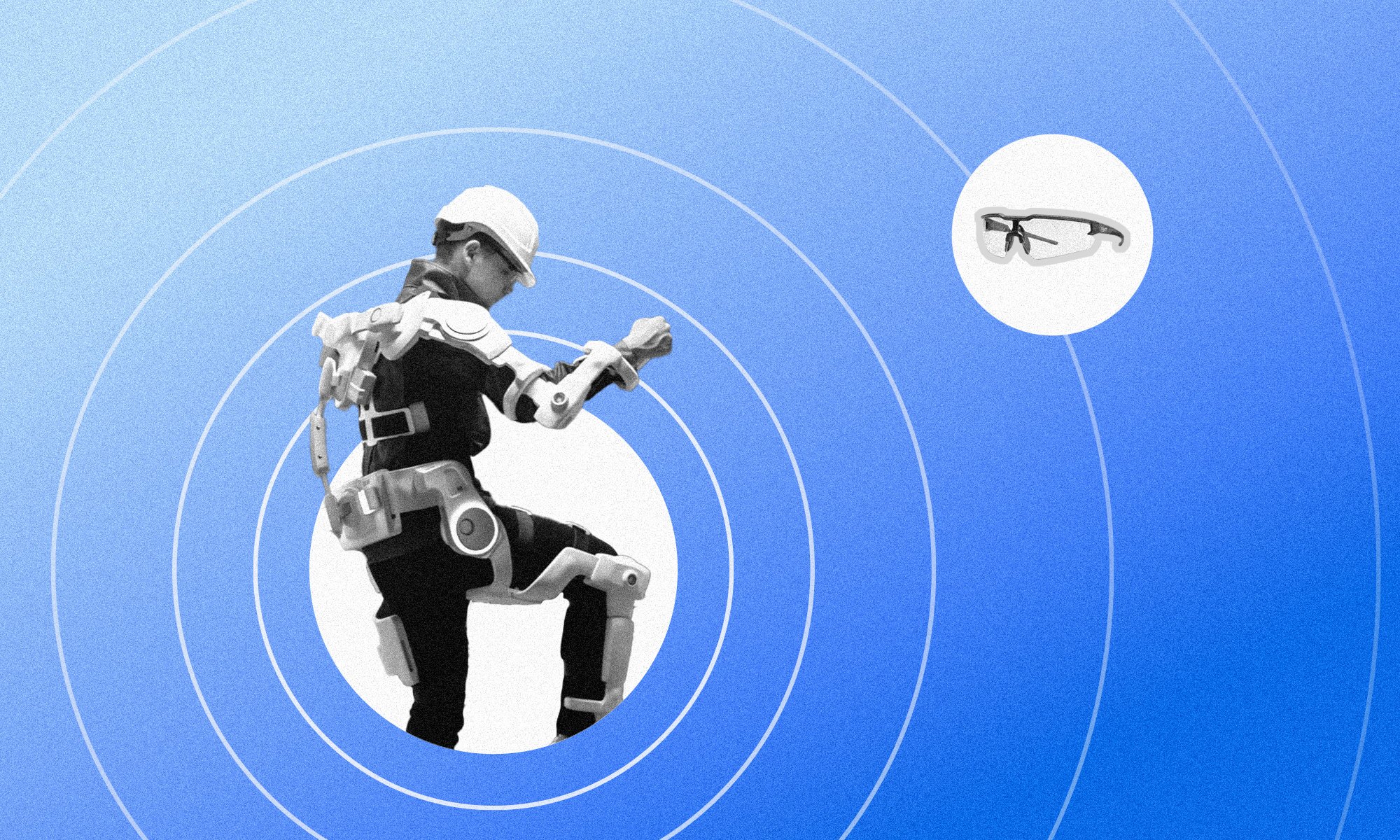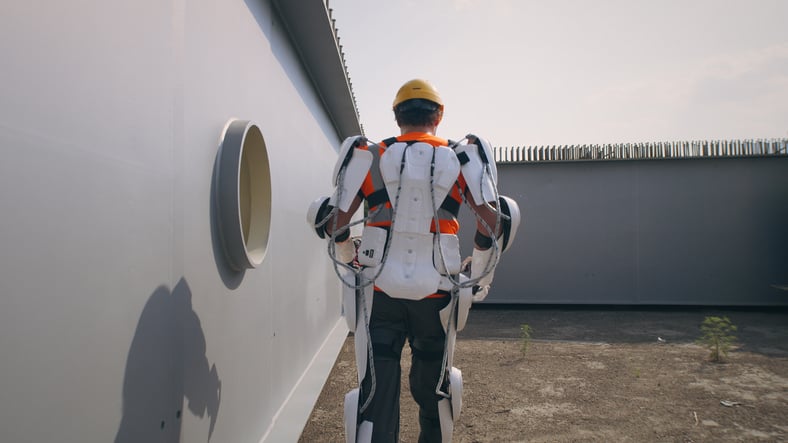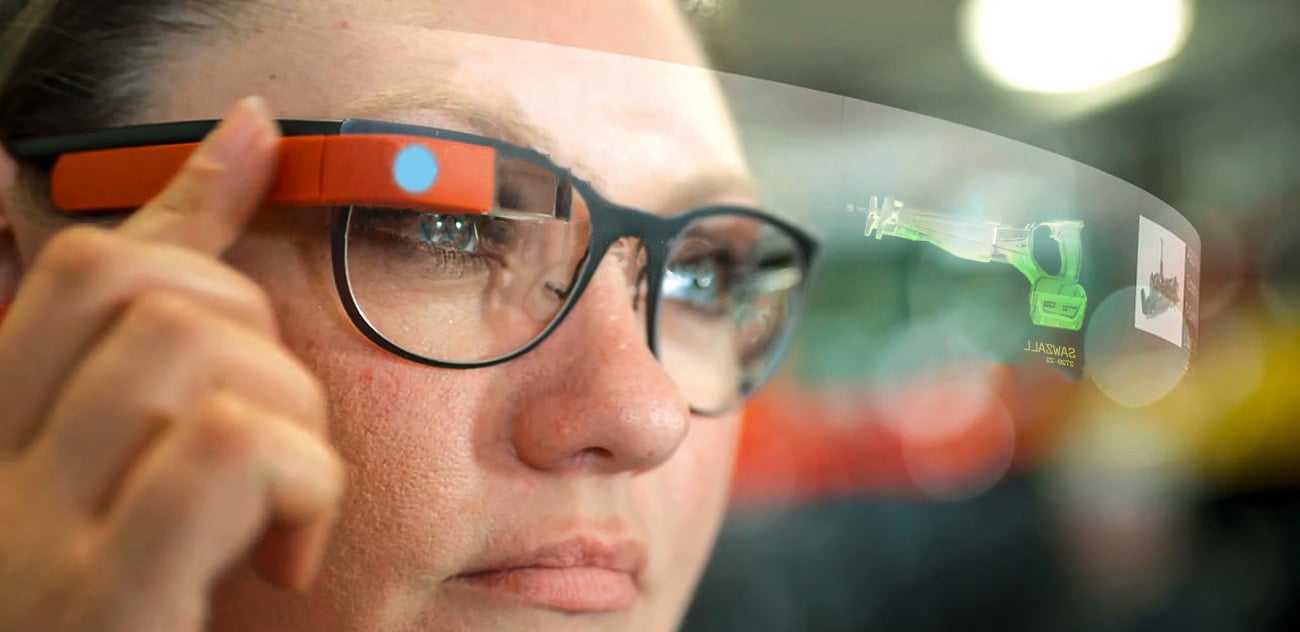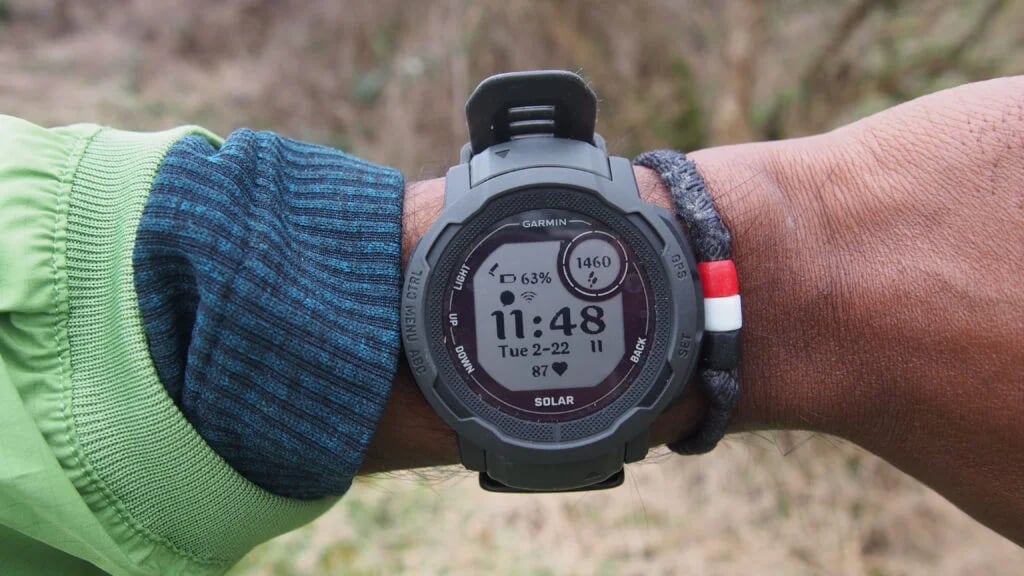
It’s easy to lose track of the human element when thinking about technology.
Nowhere is this truer than along the increasingly fuzzy border between the tool and its user, the machine and the person at its controls.
This isn’t idle contemplation. Boundary blurring, wearable, cybernetic technologies like power suits and augmented reality goggles are no longer the stuff of science-fiction. They’re here right now, radically reshaping how we perceive and execute the work in front of us. If they remain on their current trajectories, bio-mechanical exoskeletons and smart glasses might very well someday be as commonplace on construction sites as hard-hats and reflective vests.
All too often, the praises of a new technology are sung most loudly for the boost to productivity it provides, how much money it will save, or the heights of efficiency it might enable a business to achieve. Granted, these are all valid and worthwhile reasons to get excited about a new gadget or tool, but they pale in comparison to what should be the number one priority on any construction site: the safety, health, and wellbeing of human workers.
In today’s article, we’ve decided to focus exclusively on how two ground-breaking wearable technologies–exoskeletons and smart glasses–can improve the lives of the highly skilled men and women who work in construction.
We will begin by explaining what exoskeletons and smart glasses are. Next, we will offer some real-world examples of each. Finally, we will expand upon the safety and health benefits that these wearable technologies can provide to construction workers.
(We’ve also included a section of construction wearable technology examples to give broader context into wearable tech and construction, what it is and which technologies and innovations it generally encompasses.)
Construction Workers Are at a Higher Risk of Injury and Death
Before we dive in, it’s worth freshening up on why safety is so critical in the field of construction.
Here’s a lightning round of some key facts:
- Construction workers are at a higher risk of death: One in five of all workplace deaths in the US happened on a construction site in 2019.
- Construction workers are at a high risk of injury: Construction workers experienced more than 79,000 injuries in 2019.
- Construction workers experience a high rate of work-related musculoskeletal disorders: Studies show that muscle and back injuries occur with higher frequency in construction workers due to overexertion, heavy-lifting, and repeated motions. Precisely why, in fact, that in recent years, innovations in power tools have brought forth motorized solutions that deliver installations faster, help reduce repetitive motion injuries, and provide data reporting for better accountability and quality assurance.
What Is Wearable Technology in Construction?
Traditional personal protective equipment (PPE) includes hard hats, safety glasses, high-vis vests, gloves, etc., which keep users safe from typical construction hazards like falling objects, flying debris, etc.
Wearable technology in construction is a form of PPE integrating construction safety technology and innovation (e.g., exoskeleton, embedded GPS and telematics, etc.) to make construction work safer and more efficient for the user.
What are the top 5 wearable technologies today?
- Exoskeletons
- Smart Glasses
- Smart Boots
- Smart Hard Hats
- Smart Watches
Now let’s take a look at how wearable technologies can improve safety and health outcomes for workers.
Exoskeletons in Construction
From Iron Man to Tom Cruise’s cybernetic battle armor in Edge of Tomorrow (2014), chances are you’ve seen lots of exoskeletons depicted in popular media.
The prominent militaristic connotations are no accident. Exo-suited super-soldiers have been a gleam in the eye of the United States Defense Department since 2001; and most, if not all of the private companies that have developed these machines, owe their beginnings to the millions in public dollars they’ve received directly from the US military.
Thankfully, the applications of exoskeletons aren’t limited to war. On a construction site, exoskeletons can be used to build rather than destroy, enhancing the performance of workers while also dramatically increasing their health and safety.

What is an exoskeleton?
In the context of real-world construction, an exoskeleton is a wearable, biomechanical suit or apparatus that enhances the physical attributes and abilities of the person wearing it.
As in nature, human-made exoskeletons are external frames that provide added support, strength, and protection to the wearer, allowing them to lift heavier loads and withstand greater amounts of strain than they normally would be able to.
Modern exoskeletons fall into two overarching categories: Partial and full-body.
- Partial exoskeletons are worn on targeted parts of the body, such as a harness that adds strength to the back, arms and shoulders; or a brace around the waist and legs that provides support to the hips and lower back.
- Full-body exoskeletons cover the bulk of the wearer’s torso and limbs with a comprehensive and fully-integrated frame that adds strength and support across the entire body.
These two broad types of exoskeleton can be further organized into three sub-categories: passive, pseudo-passive, and powered.
- Passive exoskeletons derive their power from muscle-driven mechanical systems like pulleys, locking gears, pneumatics, and hydraulics. The main advantage of a passive exoskeleton is that they work without electricity, which removes the need for heavy batteries and enables them to function indefinitely.
- Pseudo-passive exoskeletons are mechanical frames that include onboard batteries, sensors, and other electrical components, but none of these are used as a primary power source.
- Powered exoskeletons are driven by electrical motors, or actuators, which makes them generally more powerful and versatile than other types.
What are some examples of exoskeletons in construction?
A construction exoskeleton can take many different forms depending on the needs of the job at hand. Do your workers complete a lot of repetitive tasks? Do they need to be able to lift heavy loads? Or stand in place for long periods of time?
We’ll take a deeper dive into the many different types of exoskeletons in another article. For now, here are a few quick examples to illustrate the wide range of exoskeletons that are already being used on construction sites:
The Hilti EXO-01
The EXO-01 by Hilti is an example of a partial-passive exoskeleton that targets a specific part of the body and is driven entirely by mechanical systems. Weighing less than five pounds, this electricity-free, ultra-light exo-harness straps around the arms and shoulders to prevent muscle fatigue that can result from repetitive overhead tasks like hanging drywall, installing air ducts, sprinklers, and piping.
The Guardian XO
For the full-blown, science-fiction, man-melded-with-machine effect, look no further than the Guardian XO by Sarcos. This full-body powered exoskeleton increases the wearer’s strength by a factor of 20, making lifts as heavy as 200 pounds as light as a feather. It looks a little clunky, but using it is a breeze: Complete with 24 degrees of motion, a worker can jump in and out of the battery powered suit in as little as 30 seconds, and can even lock it into place mid-task in order to more freely use their hands.
How do exoskeletons improve worker safety?
Exoskeletons have the potential to dramatically increase the health and safety of workers.
Whether partial or full-body, passive or powered, exoskeletons can provide enormous support and relief to the wearer’s body by displacing weight and absorbing tension that would otherwise lead to potentially damaging strains and sprains. With an exoskeleton, heavy loads suddenly become ultralight and the fatiguing impacts of repetitive motions are significantly dampened over time. Indeed, a recent blog post from the Center for Disease Control highlighted exoskeletons as a potential solution to the prevalence of work-related musculoskeletal disorders in construction. Some academics have pointed out that exoskeletons may even some day be considered an essential form of personal protective equipment.
While the benefits seem intuitive, we’d be remiss if we didn’t highlight that exoskeleton safety is far from a settled issue. To catch up with the advanced state of this technology, agencies like ASTM International are working diligently to create industry standards for the safe and proper use of exoskeletons in the workplace.
Smart Glasses in Construction
Another staple of science-fiction cinema is futuristic headgear. Maybe it’s a sleek pair of shades, a visored helmet, or a set of digital eye-implants. The object isn’t as important as the unique way of seeing that it provides: a flashy, cross-spectrum, digital heads-up-display crowded with everything from targeting reticules to tomorrow’s weather forecast.

As with exoskeletons, our collective imagining of computer enhanced vision is often tightly focused on the battlefield, whether viewed through the ruby-red eyes of the Terminator (1984) or the infrared gaze of the Predator (1987).
In the real world, however, smart glasses can be put to much more constructive uses.
What are smart glasses?
Also referred to as augmented reality (AR) or mixed-reality headsets, smart glasses overlay computer generated information and graphics onto physical space, transforming the wearer’s POV into a hybrid of the real and the digital.
Smart glasses are different from virtual reality (VR) goggles, which immerse the wearer in a visual “space” that is 100% simulated. Smart glasses, on the other hand, create only a partial simulation by layering virtual elements into the wearer’s field of view.
What are some examples of smart glasses in construction?
While many companies are currently making smart glasses hardware that can be worn in a variety of situations, there has yet to be a full-fledged headset created specifically for construction.
One of the most intriguing products on the horizon was an AR enabled smart-helmet called the Daqri, but the startup that was working on it collapsed in 2019. Meanwhile, Google Glass was notoriously dead on arrival and other smart glasses titans like Magic Leap have also failed in recent years. As with AI, the reality of smart glasses, it seems, doesn’t quite line up with the hype…not yet, at least.
That said, there are a handful of promising early-gen smart glasses for industrial use like the Epson Moverio BT-35E, as well as several AR enabled apps that might someday be effectively used in combination with an AR enabled hard-hat.
The Vuzix Shield
Perhaps the closest we’ve come so far to achieving an effective construction-grade HUD can be found in the smart glasses products created by Vuzix.
This New York based tech-company has developed several lines of augmented-reality headsets, including the Blade for general consumers and the M400 for manufacturing applications. The three-ounce rubberized M400 headset comes complete with an onboard 4k camera, touch controls, and 64 gigabytes of storage space.
Vuzix is also working on a new set of smart glasses called the Shield, which appear to be geared more directly to the safety needs of construction workers: ANSI Z87.1 eye-protection, noise-canceling headphones, and smart-phone integration are a few of its features. The Vuzix Shield is not yet available for purchase, though according to the company, it is set to hit the market some time this year.
Arvizio AR Instructor
Ontario-based startup Arvizio has developed a training app called AR instructor that is poised to revolutionize the training capability modes of smart glasses. The company’s website is light on details, but a series of mockup videos show how smart glasses equipped with the AR Instructor app would be able to overlay 3D models and instructional information into the wearer’s POV–all features that could be potentially useful in the kinetic environment of a construction site.
How do smart glasses improve worker safety?
Smart glasses technology isn’t quite where it needs to be to meet the needs of construction, but it’s getting very close. If developed further, smart glasses could soon become invaluable to worker safety on the jobsite.
As training tools, for instance, smart glasses offer a potentially unrivaled ability to meet workers where they’re at, helping them to learn by doing instead of passively absorbing an educational video. Graphical overlays akin to the kind offered by Arvizio could highlight the correct sequence of controls to manipulate a new power tool or complicated piece of machinery. Informational readouts could pop-up alongside real-world objects, enriching the user’s knowledge base about the tools, materials, and best safety practices of their trade.
Smart glasses could also increase safety on construction sites while work is underway by alerting the wearer to the presence of toxic chemicals, poor air quality, and other hazards in their environment that might otherwise go unnoticed. Drones flying overhead could provide real-time situational updates, feeding information to smart headsets on the ground that could then notify their wearers when an NFC-embedded pallet of materials has arrived or flag the presence of fellow workers in the area when a dangerous task is underway.
Other Wearable Technology Examples
Outside of the construction exoskeleton and the smart specs, how is wearable technology used in construction?

Pictured above: Garmin® Instinct® Solar watch. Image source: Trusted Reviews
- Smart Boots in Construction: it’s also worth noting that companies like SolePower have developed intelligent, industrial footwear to measure user fatigue, provide emergency alerts (such as in the event of a fall), increase workflow transparency, and prevent struck-by incidents, among OSHA’s “fatal four” categories accounting for 60% of fatalities and among important construction safety topics to educate workers about.
- Smart Hard Hats: Meanwhile, smart hard hats can help reduce the risk of traumatic brain injuries, detect fatigue to signal when it’s time to take a break, provide proximity sensing to prevent accidents, and incorporating the Internet of Things to draw data-driven insights.
- Smart Watches can help you measure pertinent health data and prevent overexertion. The Garmin® Instinct® Solar, for example, provides “military standard toughness” (i.e., tough for jobsite conditions) while offering a uniquely long battery life due to its built-in solar charging functionality.
Bottom Line
There are so many exciting new technologies sweeping through the world of construction right now.
Entire buildings are being assembled out of everything from mushrooms to green concrete; BIM and GIS programs are generating complex simulations of construction projects; LiDAR-equipped construction drones are performing topographic and bathymetric surveys; AI in construction has assisted construction robots to rove over jobsites; and construction 3D printers are weaving entire structures as if out of thin air.
For all the exciting benefits these new tools bring, it’s important to remember that their truest value derives from the extent to which they improve the world and the lives of the people who use them. The health and safety of workers has always been an urgent priority in the hazardous world of construction, and ought to be at the forefront of our minds when weighing the potential benefits of wearable technologies like exoskeletons and smart glasses.
When combined with innovative power tools and smart tool technology—like AUTOSTOP ™ and antikickback features that prevent damage to materials and injury to users, and unlimited tool customization via the mode library to provide application-specific, precision controls and repeatability—contractors are empowered to work safer, deliver quality installations, and be more productive than ever before.
TL;DR
What is wearable technology in construction?
Any wearable device that incorporates some form of construction safety technology to make construction work safer and more efficient for the user.
What are the top 5 wearable technologies today?
- Exoskeletons
- Smart Glasses
- Smart Boots
- Smart Hard Hats
- Smart Watches